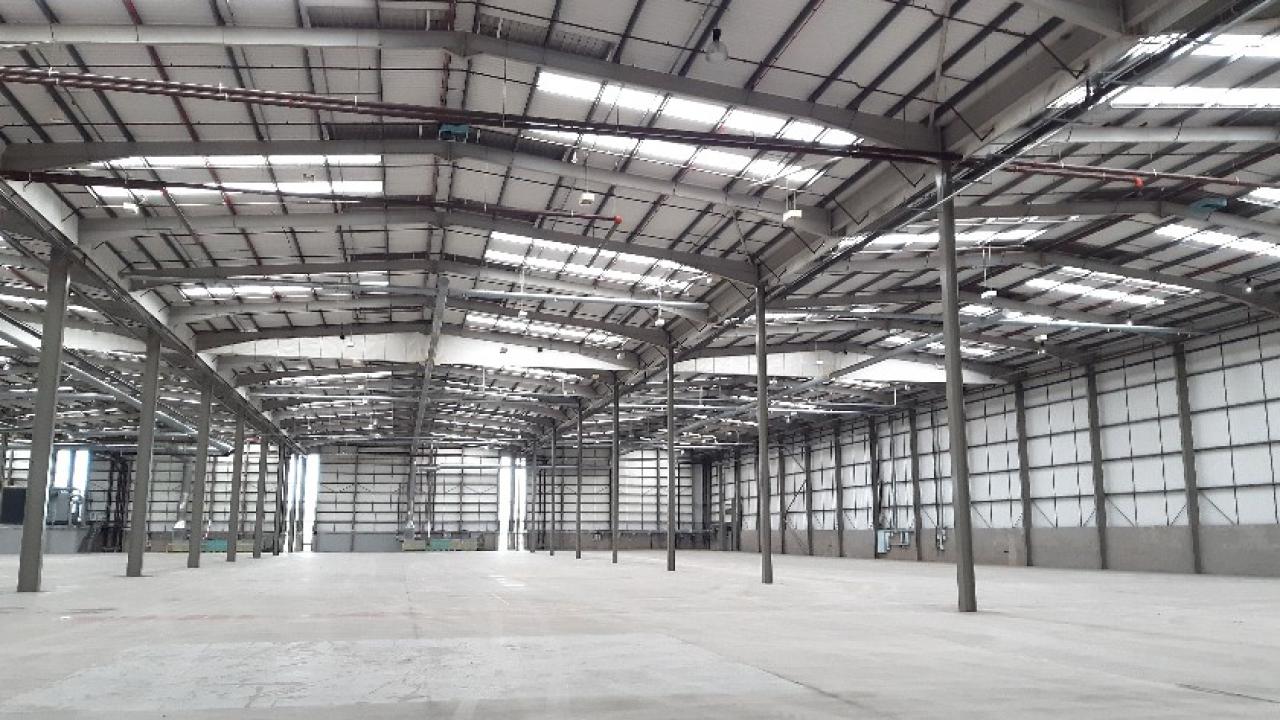

Shedding Light on Embodied Carbon: Zenon Evolution
COP26, held in October 2021, generated a lot of discussion around the construction industry, which is to be expected considering that, in the UK alone, 40% of the total carbon footprint is attributed to the built environment, of which construction plays a crucial function. The question of how this can be reduced is answered, in part, by utilising building components which have lower embodied carbon.
Embodied carbon refers to the CO2 emitted when producing materials. It is estimated using the energy expended to extract and transport raw materials as well as the emissions generated during the manufacturing processes.
The embodied carbon of a building includes all emissions from the construction materials, the construction process, all the interior components such as fixtures and fittings as well as from deconstruction and disposal at the end of its service life.
The UK construction sector has shown increasing interest in low embodied carbon, evidenced by benchmarks set in the RIBA 2030 Challenge which seeks to encourage circular economy strategies and minimise offsetting (which should be used as a last resort).
At Hambleside Danelaw, we have always sought to reduce the embodied carbon within our products, whether through utilising recycled materials, or trialling new methods of manufacturing. While all Hambleside Danelaw’s divisions seek to innovate in this area, Zenon rooflights have been true pioneers in the drive to offer products with lower embodied carbon.
So firstly, why consider rooflights?
The most obvious answer the natural daylight they deliver, which comes with a range of additional benefits, from reduced artificial lighting cost to the occupant’s health and welfare. From a safety standpoint, GRP offers a non-fragile solution which can withstand snow-loads, wind, and rain, while allowing a good amount of natural light to pass through into the building.
GRP rooflights used in industrial and commercial buildings are often overlooked as a key way to reduce energy consumption through the benefit of free and natural daylight, likely due to the fact that common practice is so ingrained when it comes to specifying rooflights.
When specifying rooflights there are some important things to consider such as:
· Light Transmission – this is the amount of light that passes through the rooflight to the interior of the building and the main reason for their existence.
· Total Solar Transmission (or g-value) – this is the combination of the directly transmitted heat energy and the re-radiated secondary component that accompanies natural daylight.
· Thermal Transmission (U-value) – A measure of the flow of heat through an insulating layer or building material. The lower the U-value, the better the insulating function.
· Fire Performance – How a product responds and resists heat and fire, for more information on Zenon rooflight’s fire performance click here.
· Sound Transmission – Acoustic properties or sound transmission considerations in building design cover the methods by which sound transfer, from one part of a building to another, or from inside to out and vice versa, can be controlled.
· Non-Fragility – Specific to roofing, the term non-fragile refers to a roof assembly rather than any one component. This is a critical issue and assistance is available from all responsible rooflight manufacturers, as well as from NARM (National Association of Rooflight Manufacturers).
Currently, rooflight assemblies are supplied to meet specific thermal performance requirements. It is a common expectation that rooflights deliver a Class B Non-Fragility rating and have a service life of 25 years. Viable and specific choices can be made to reduce the embodied carbon of the rooflight assembly, while still achieving these requirements.
Zenon Evolution
Hambleside Danelaw’s Zenon Evolution is manufactured with a lower resin to glass ratio than conventional GRP rooflights. This means that Zenon Evolution is significantly lighter and thinner than traditional high strength GRP options – offering better profile definition and a more effective lap detail with the surrounding metal sheet.
In addition to this, the reduction of resin content means that the Zenon Evolution product has significantly less embodied carbon.
Zenon Insulator
Made from biodegradable cellulose acetate, Zenon’s patented Insulator layer delivers improved thermal insulation while having minimal impact on light transmission. As the Insulator’s honeycomb cell structure is perpendicular to the plane of the rooflight, the internal light reflectance is directed into the building rather than reflected out.
Zenon Insulator offers a clear way to reduce the carbon embodiment whilst improving thermal transmission and maintaining the light transmission.
About Hambleside Danelaw
Hambleside Danelaw were the first manufacturer to be awarded an EPD (Environmental Product Declaration) for GRP rooflights. This means that through specifying Zenon rooflights in the building design, 1.5 points towards the overall BREEAM rating can be obtained through Mat 02. An EPD is an independently verified and registered document communicating transparent and comparable information about the life-cycle environmental impact of products.
Towards the end of 2021, Zenon published a White Paper titled ‘Sustainability from natural daylight in the built environment’, which aims to offer a broad context of sustainability in the construction industry, while highlighting the benefits of natural daylight delivered through GRP rooflights. Request a copy from Hambleside Danelaw’s website.
To learn more, or to discuss specifying Zenon rooflights, contact the team on +44 (0) 1327 701 900

